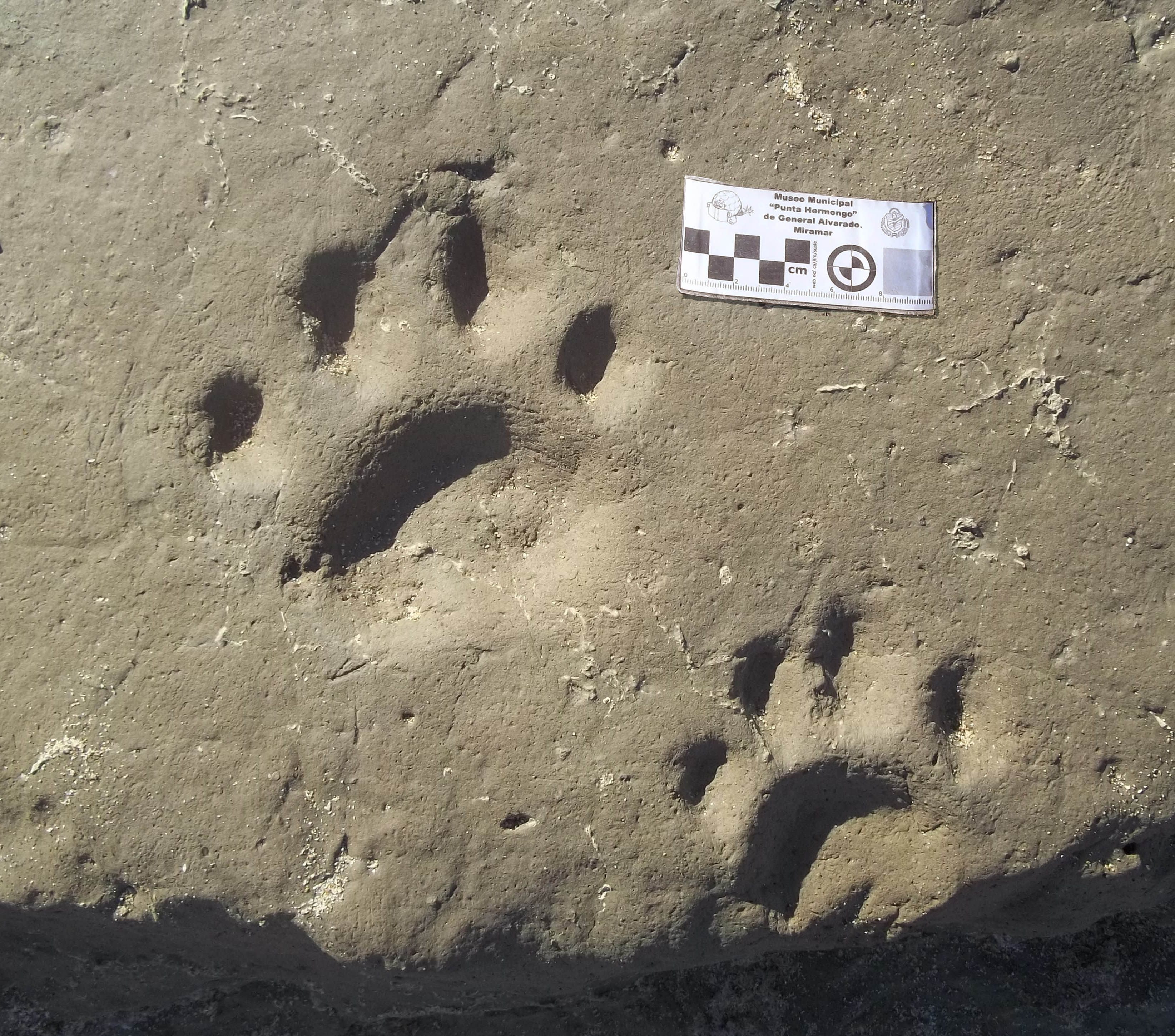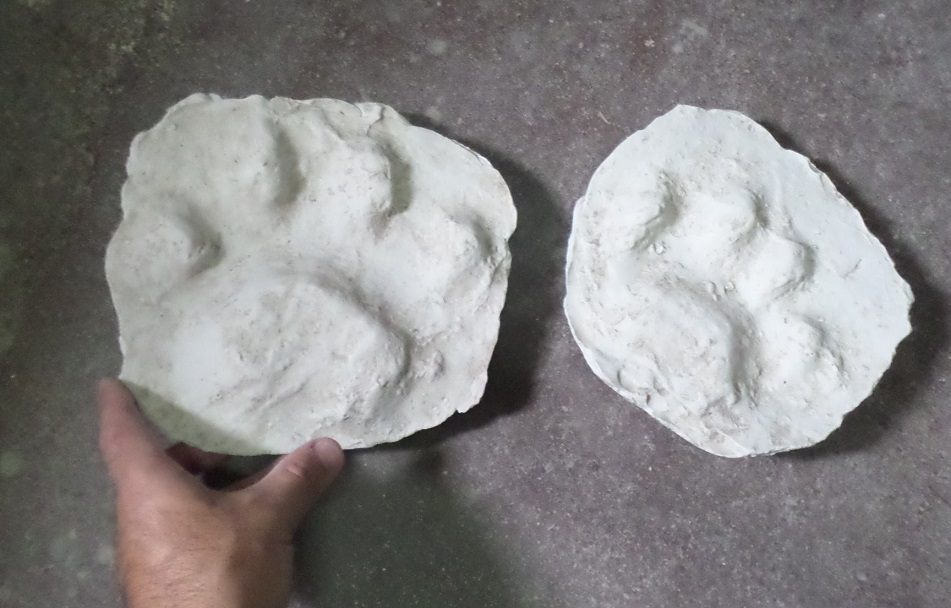Found: The First Known Footprints of an Elusive Sabre-Toothed Cat
And they tell us about how they hunted.

Today, the beaches of Miramar are no doubt covered in the footprints of visitors to this resort town on Argentina’s coast. But once—at least 10,000 years ago, during the Late Pleistocene—it was a sabre-toothed cat who prowled the area, and was nice enough to leave behind some fossilized tracks.
The prints were discovered, not far from the city’s commercial center, in September 2015 by researchers from the local Punta Hermengo Municipal Museum. The scale of the prints—about 7.5 inches in diameter, significantly larger than even the biggest left by modern lions—suggested that they were left by Smilodon populator, a species of sabre-toothed cat known, from fossilized bones, to have lived in the region. But footprints, or any other non-bone traces of them, had never been found before, so they couldn’t be attached definitively to that species. This means that they had to be assigned to a new species, called an “ichnospecies,” recently described in detail in the journal Ichnos.
Ichnology is a subfield of paleontology that studies everything but fossilized skeletal remains—footprints, trails, and borings, for example. These pieces of evidence provide different information about extinct species than bones alone. These footprints, for example, show that the large felines were more plantigrade than modern cats—in other words, they walked more on their soles like humans, and not like toe-favoring house cats. This, combined with the ichnospecies’ bulkier front feet, “reinforce the idea that this felid was an ambush predator,” the authors write.

In a nod to the prints’ place of discovery, the ichnospecies has been named Felipeda miramarensis—an honor that has made the local museum that found them very proud. And now, Federico Agnolín, a paleontologist at the Argentine Museum of Natural Sciences and lead author of the new publication, is teasing another new find from Miramar: a previously unknown species of ancient sloth. Fittingly, we’re still waiting on that publication.








Follow us on Twitter to get the latest on the world's hidden wonders.
Like us on Facebook to get the latest on the world's hidden wonders.
Follow us on Twitter Like us on Facebook